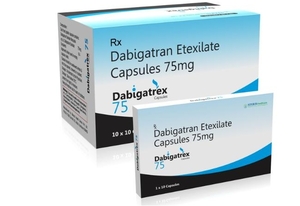Unlocking the Potential of Dabigatran for Kidney Disease
Body
Understanding Dabigatran
Dabigatran, classified as a direct oral anticoagulant (DOAC), is commonly prescribed to reduce the risk of stroke and systemic embolism in individuals with non-valvular atrial fibrillation. Unlike traditional anticoagulants, dabigatran directly inhibits thrombin, a key player in the blood clotting process, offering a more targeted approach to preventing clot formation.
Challenges in Kidney Disease
Patients with kidney disease often face challenges in managing medications, as impaired renal function can affect drug metabolism and elimination. Dabigatran, primarily excreted through the kidneys, requires special consideration in individuals with varying degrees of renal impairment.
Dosing Adjustments
The pharmacokinetics of dabigatran necessitate dose adjustments in individuals with kidney disease. Reduced kidney function may lead to a slower elimination of the drug, potentially increasing the risk of bleeding. Therefore, healthcare providers carefully assess kidney function and adjust the dosage accordingly to maintain the delicate balance between anticoagulation benefits and potential side effects.
Clinical Evidence and Studies
Several clinical studies have investigated the use of dabigatran in patients with kidney disease. These studies aim to determine the safety and efficacy of the drug in this specific population, providing valuable insights for healthcare practitioners. Understanding the results of these trials is crucial for informed decision-making when considering dabigatran for patients with kidney disease.
Benefits and Risks
While dabigatran presents a promising alternative to traditional anticoagulants, balancing its benefits with potential risks is imperative. The reduced risk of bleeding complications compared to warfarin, a conventional anticoagulant, is a notable advantage. However, careful monitoring and adherence to dosing guidelines are essential to mitigate the risk of adverse events.
Patient-Centered Care
The integration of dabigatran into the treatment plan for individuals with kidney disease underscores the importance of patient-centered care. Healthcare providers must consider factors such as kidney function, concurrent medications, and individual patient characteristics to tailor anticoagulation therapy effectively.
Conclusion
The use of dabigatran in people with kidney disease represents a significant stride in anticoagulation therapy. While its targeted mechanism of action and potential benefits are noteworthy, the nuanced relationship between dabigatran and kidney function necessitates careful consideration and monitoring. Collaborative decision-making between healthcare providers and patients, informed by the latest clinical evidence, is essential to optimize the use of dabigatran in individuals with kidney disease. As research continues to unfold, the evolving landscape of anticoagulation therapy promises a future where personalized care takes center stage, enhancing outcomes for patients facing complex medical conditions.












Comments